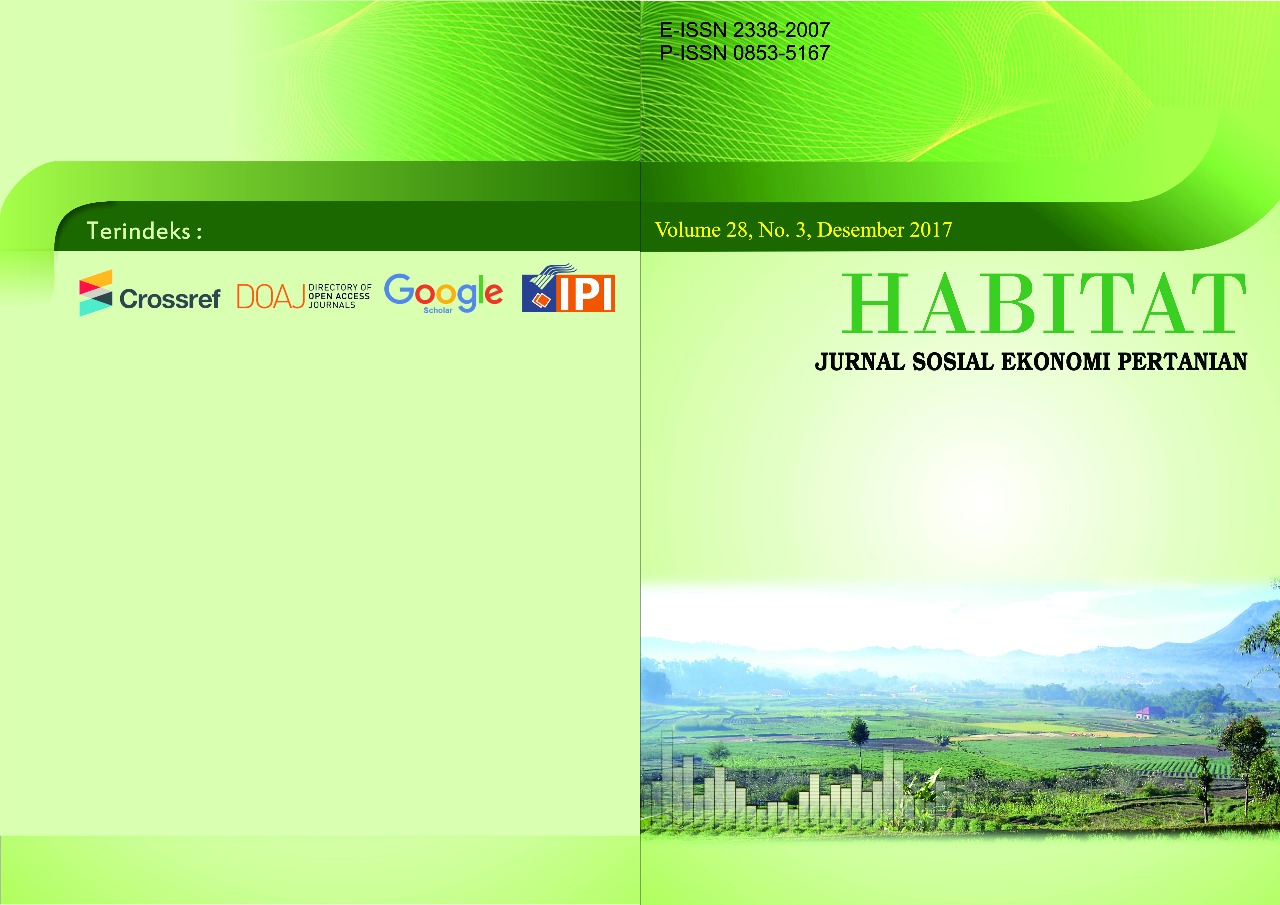Potential Market Willingness to Pay Through Edutourism Plan at CV. Damarayu Malang District
DOI:
https://doi.org/10.21776/ub.habitat.2017.028.3.12Keywords:
edutourism, market, willingness, valuationAbstract
Edutourism is a necessity for kindergarten school, and enteprise can develop edutourism for kindergarten school as their potential market. This fact is crucial to observe to encounter potential market with enteprise that can supply their needs and both can get profit from the edutourism. By that background, this research are going to find valuation of the edutourism plan by potential market willingness to pay (WTP), to know factors that influence potential market WTP and to know potential market segmentation that declare willing to pay the edutourism. This research uses quantitative approach, analyzed by contingent valuation method and logistic regression analysis. The potential market in this research are kindergarten school in Pakisaji sub-district that have outingclass program. The finding revealed that economic value of the edutourism is more than the price target. Factors that influence potential market WTP are teachers education background, school fee per month, and ability to pay. Segmentation of the edutourism plan are kindergarten school with standard teacher’s education background in bachelor degree, categorized in low price school fee and already have ability to pay the edutourism.References
Carson, R. T. (2000). Contingent Valuation: A User’s Guide. Environmental Science & Technology, 34(8), 1413–1418.
Charusiri, W., Tuntates, U., & Choiejit, R. (2015). Willingness to Pay for Ecotourism Management with Community Participation in Lipe Island, Satun Province. The Asian Conference on Business & Public Policy Official Conference Proceedings, (2015).
Dirjen Hortikultura Kementerian Pertanian. (2015). Statistik Produksi Hortikultura Tahun 2014, 286.
Eriyanto, A. (2007). Teknik Sampling - Analisis Opini Publik. Yogyakarta: LKiS Pelangi Aksara.
Gujarati, D. N., & Porter, D. C. (2009). Basic Econometrics (5th ed.). McGraw-Hill.
Gujarati, D. N., & Porter, D. C. (2012). Dasar-dasar Ekonometrika. (D. A. Halim, Ed.) (5th ed.). New York: Salemba Empat.
Martono, N. (2011). Metode Penelitian Kuantitatif - Analisis Isi dan Analisis Data Sekunder (2nd ed.). Jakarta: Raja Grafindo Persada.
Masrun, Ruslan, M., Mahyudin, I., & Rizali, A. (2016). Analisis Penerapan Konsep Eco-Airport dengan Menggunakan Metode Willingness to Pay di Bandar Udara Syamsudin Noor Banjamasin Kalimantan Selatan. EnviroScienteae, 12(3), 247–255.
Nachrowi, N. D., & Usman, H. (2002). Penggunaan Teknik Ekonometri (1st ed.). Jakarta: Raja Grafindo Persada.
Pearce, D., Atkinson, G., & Mourato, S. (2006). Cost-Benefit Analysis and The Environtment: Recent Development. Paris: EOCD.
Ritchie, B. W., Carr, N., & Cooper, C. (2003). Managing Educational Tourism. (C. Cooper, M. Hall, & D. Timothy, Eds.). Clevedon: Channel View Publication.
Yugo Nugroho. (2013). Analisis SWOT terhadap Strategi Pengembangan Bisnis Budidaya Jamur Tiram. Jurnal Manajemen UGM.





















